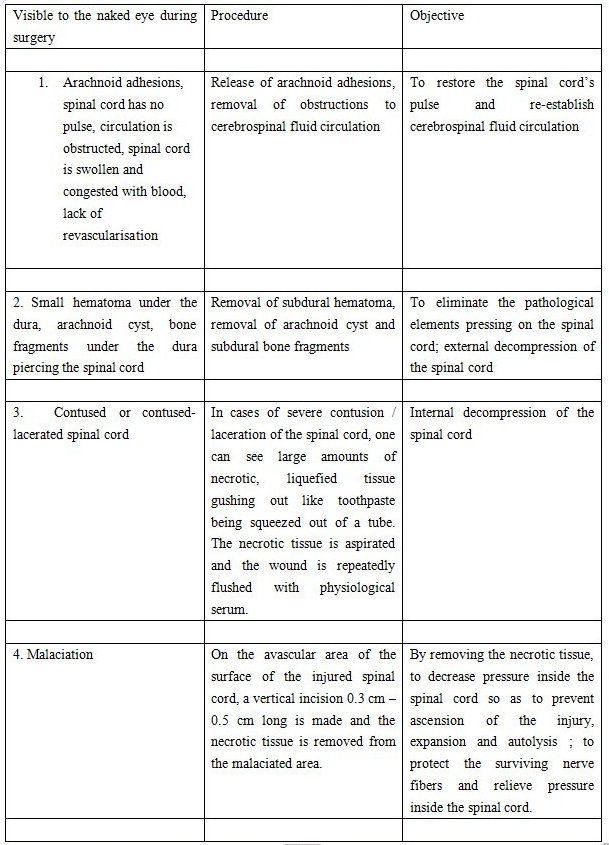2:Phone appointment
3:Email us
In acute spinal injuries: “early combined vertebral and spinal cord surgery”. In the past, both in China and elsewhere, stabilisation and laminal decompression were the only types of surgery done on patients with injuries to the spinal column and spinal cord. There was no surgery on the spinal cord itself. However, merely stabilising the spinal column without treating the spinal cord injury is an incomplete treatment. In summarising 1,718 cases of spinal column and spinal cord injuries from the 1976 Tangshan earthquake to the present, Xu Shaoting (胥少汀) concluded that internal vertebral stabilisation does not increase the rate of recovery from spinal cord injury.
The degree of spinal cord injury partly depends upon the number of surviving axons in the spinal cord. The greater the number of normally functioning axons, the less severe the damage. The innovative “acute combined vertebral and spinal cord surgery” developed by the Centre stabilises the broken vertebrae and at the same time opens the spinal cord and slits open the malaciated, necrotic lesions -- truly decompressing the spinal cord and decreasing secondary damage,so as to preserve the surviving nerves and their function to the greatest possible extent. This is a conceptual shift in the treatment of spinal cord injury. Results suggest distinctly greater efficacy of treatment in patients on whom combined vertebral and spinal cord surgery was carried out at an early stage compared to patients who had only internal stabilisation surgery.
Table 1 Early examination of spinal cord and surgery to slit open the malaciated spinal cord

Illustration 1: What can be seen in early decompression surgery
A:Cord is swollen and congested with blood;B: Malaciation: after incision necrotic tissue gushes out